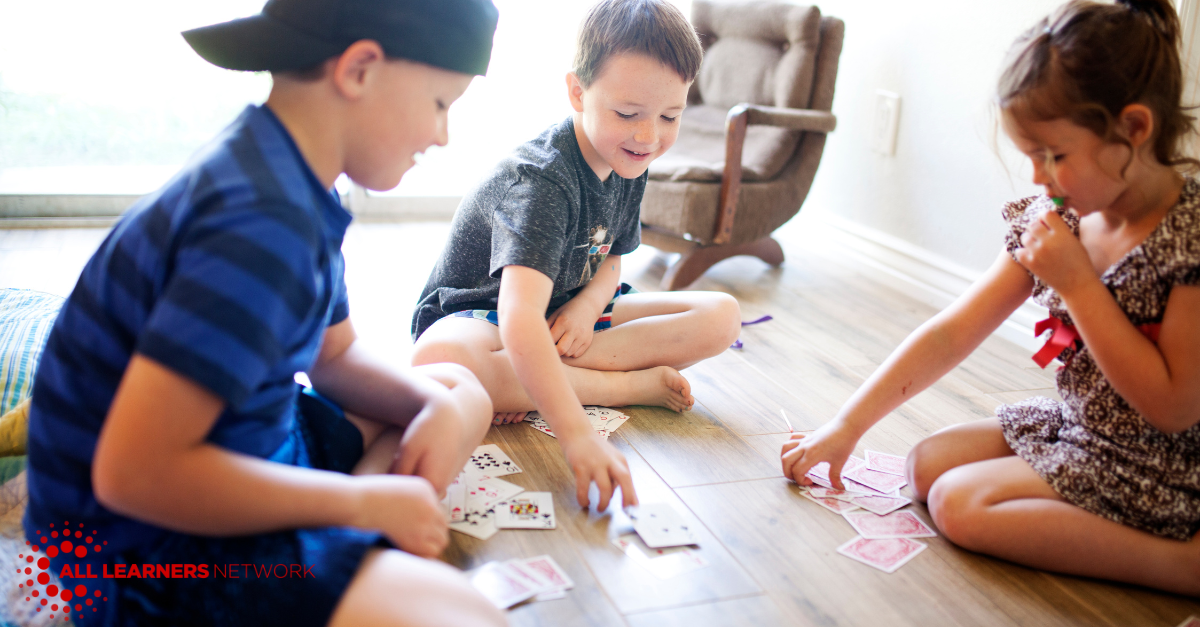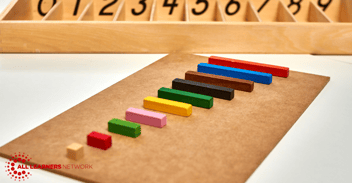
Math Games as a Tool for Learning
Published: July 19, 2024
All Learners Network’s Facilitator, Tara Trudo, and PreK-Grade 8 Mathematics Supervisor (Groton-Dunstable School District), Karen Gartland, M.Ed., outline how games can be used in classrooms to facilitate learning.
Teachers have embraced games in math classrooms for many years. Most often, these games are played just for fun, to enjoy after other math activities and tasks. In many classrooms, they serve as a “dessert” option for when other tasks have been completed. But there are many good reasons to include math games in your math block as an option all kids can access, not just for early finishers. Many articles and blogs have been written about why math games benefit kids. We love math games at All Learner’s Network and think they should be included in every math classroom. Tara Trudo, an ALN facilitator who has created many of the games for All Learners Online resources, teamed up with Karen Gartland, co-author of the Well Played math game book series, to dive deeper into three important reasons you should be playing math games with your students that do not get talked about enough.
Games give kids opportunities to learn math, not just practice.
In math classrooms, kids often learn math by getting stuck on a problem and having some time in the productive struggle zone, followed by a moment of insight. After that aha moment, they are ready to practice what they have learned. The challenging thing is that not all kids have their moment of insight at the same time, which can lead to frustration and negative behaviors. Too often, we see kids being asked to do practice problems on their own in programs that assume all kids have had their aha moment at the same time. Giving kids games to play with partners increases their chance of having a moment of insight while keeping kids engaged in an environment where they can be relaxed and curious.
This means playing games can help kids continue to learn math, not just practice it. For this to happen, we need games that allow kids to push slightly on their understanding. Since not all kids in any classroom have the same background knowledge, understandings, or moments of insight that occur simultaneously, we need games that can vary as our kids do. This presents a strong case for games that have a low floor and a high ceiling. When we give our students games that everyone can access, yet everyone can productively struggle with, we increase engagement, opportunities for those aha moments, and how long our students will find the game interesting and engaging.
Games allow students to talk about math.
The phrase accountable talk has now become commonplace in education. While students work in groups while they solve problems, we expect students to share ideas for getting started, explain their strategies, ask questions, and listen to their classmates’ thinking to advance the group’s common understanding. Such should be the case as they are playing a math game. This activity allows students to engage in a meaningful task and discuss their thinking while playing. This experience may be enhanced by having students play with a partner in competition with another set of partners. In this way, their discourse becomes purposeful to them. They may discuss the validity of their next move, respectfully disagree about a strategy, and share their misunderstanding of a concept.
It may take some practice to help our students become adept at engaging in rich discussions while playing games. Recognizing that game-playing provides a perfect opportunity to focus on social-emotional learning, teachers may want to hold a class meeting where the topic centers around what they should do if two students disagree on a strategy. Students could role-play a situation that occurred the day before, perhaps recalling what they wrote about in their game journal, asking their classmates for ideas on how to get their partner to play the game fairly, or allowing for others’ thinking when choosing a next move.

As students become more adept at playing cooperatively and competitively, they can move toward learning to focus on deepening their mathematical understanding. They could discuss, as a class, what would be some good ways to start a conversation, such as “What do you think we should do next?”, “Why did you think we should put a game piece on that number?” or, “I think we should put this card next to the 2 because…” These questions are open-ended, often non-controversial, and ultimately lead students to learn more about the mathematics involved in the game.
Games can provide teachers with valuable insights into their students’ current understandings.
Many times, when students are playing a game in a small group, they will sit in a corner of the room, huddled together, and the teacher stops by for a moment or two to check in on their progress. While this may be a valuable experience in itself, teachers often wish they could sit with their students while they are playing, observing their moves, and listening to their conversations. In reality, the teacher likely has four or five other groups to visit and may even stay with one group longer than another. As a result, there are missed opportunities, such as learning a student’s new conceptual understanding or observing a misconception that would, in other settings, deserve a discussion.
While playing a game intended to increase conceptual understanding of a mathematical concept, students can share what they are learning without the teacher necessarily being present. Students should first be made aware of their responsibilities when playing the game. It can be a valuable experience to create, as a class, the intended protocols for game playing, just as they would for engaging in the math menu experience of a lesson. An example of a classroom norm might be, “We will discuss the math of the game, not just about whose turn it is.” In addition, they should know they are being held accountable for their learning. Students may be asked to complete a recording sheet while playing, recording their moves. They should know that the day’s exit card might involve a question geared toward a piece of understanding from playing the game or that there might be a reflection question students will answer for homework that night. The students’ work can then be reviewed and revisited in the class. For example, a teacher might review an exit card question, asking students to share their thinking about how best to arrange a set of cards to create the highest score possible using the order of operations. Students may share answers that will allow the teacher to clear up a misconception about which operation is carried out first, addition or subtraction.

Games belong in every math block.
We believe all kids should have access to games as a regular part of their math block. Games allow students to continue building mathematical understanding, increase student-to-student discourse, and give teachers insight into students' thinking. They are also engaging and enjoyable and contribute to a relaxed classroom environment where students are doing the talking and the learning. We hope you find a way to include math games as part of your daily math block!
Click here for the printable version.
What Now?
1. Join All Learners Online (ALO) to get access to more games to use in your math block!
2. Check out our recent Instagram (@all_learners_network) posts for some of our team’s favorite games.
3. Bring All Learners Network (ALN) into your school or district for embedded professional development.

All Learners Network is committed to a new type of math instruction. We focus on supporting pedagogy so that all students can access quality math instruction. We do this through our online platform, free resources, events, and embedded professional development. Learn more about how we work with schools and districts here.




